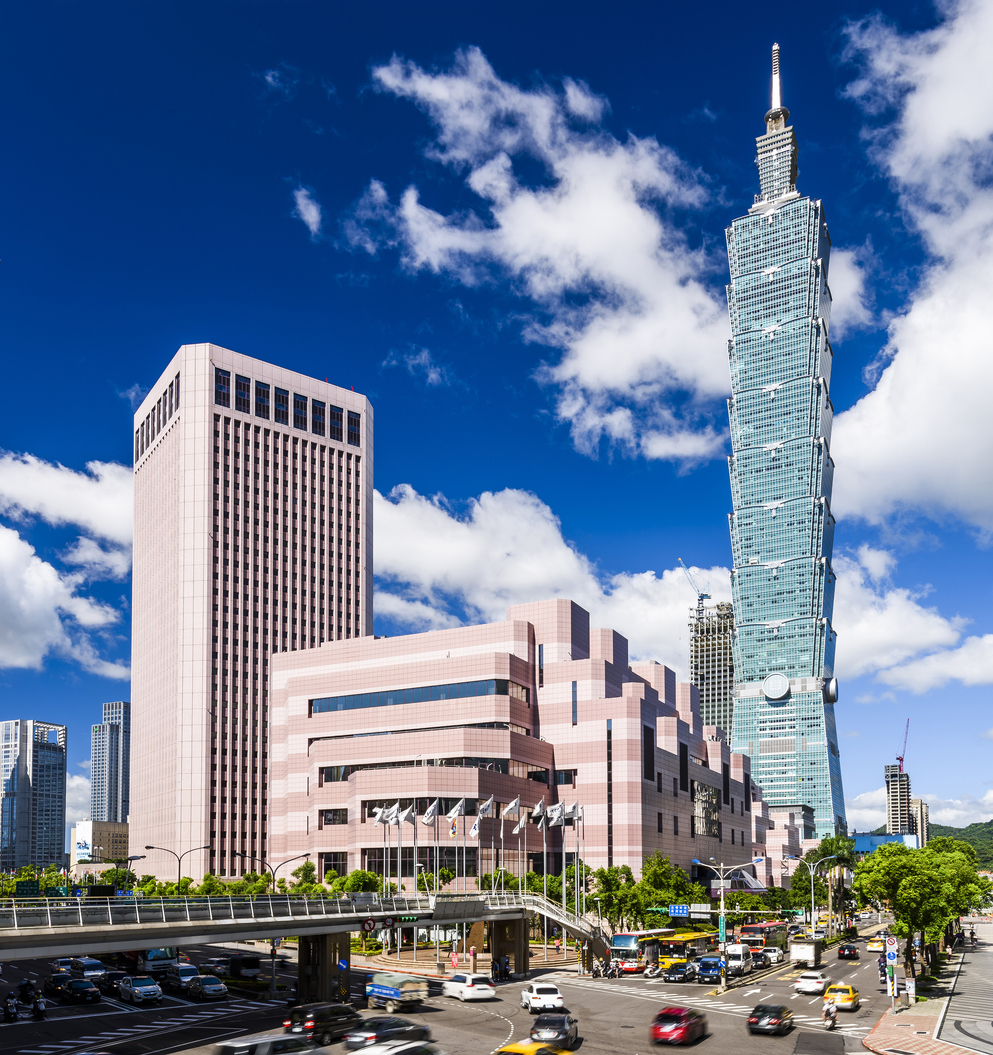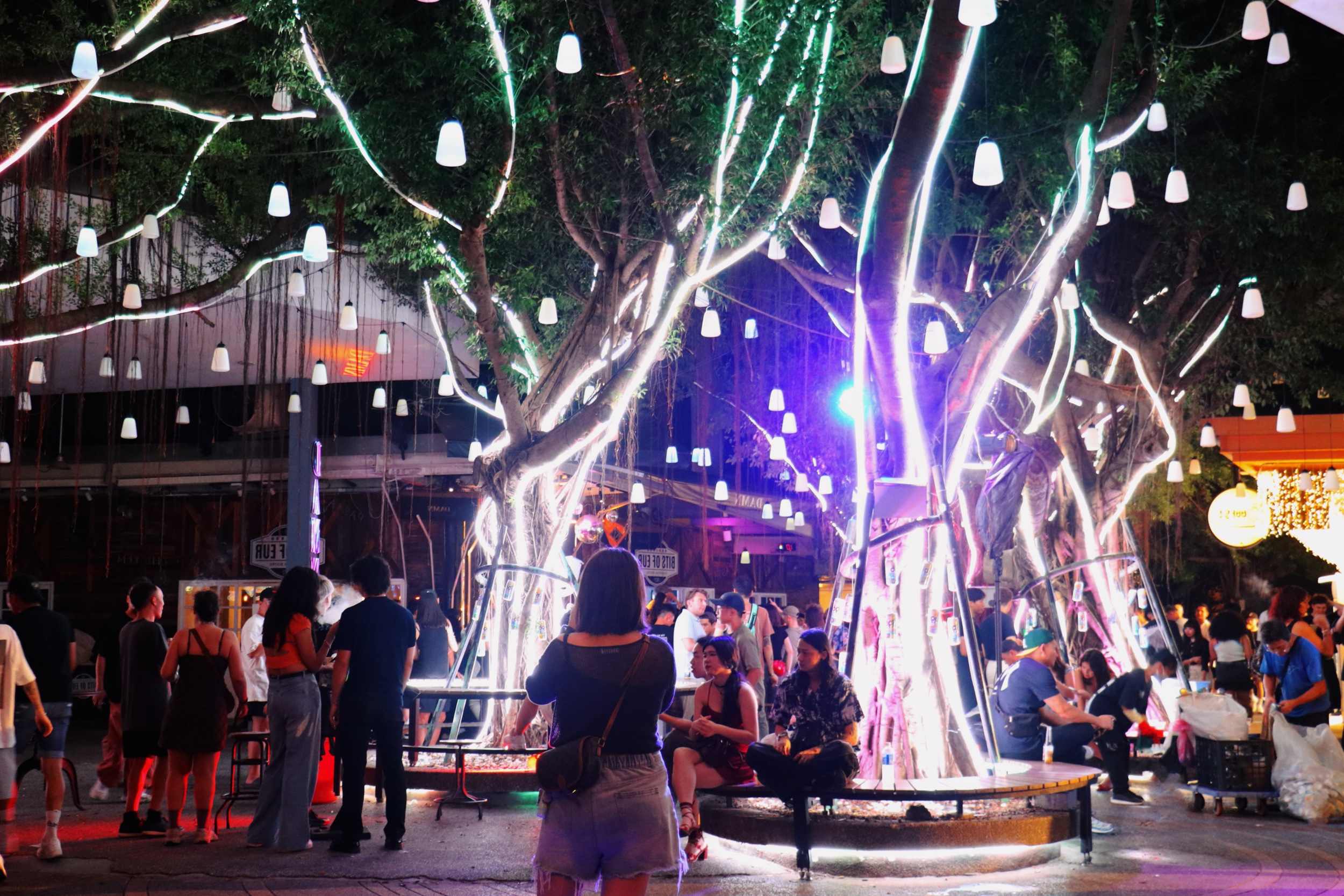Author: Levarcy Chen
Photo: Levarcy Chen, Ryan Wu(吳裕隆), Andrew Haimerl, B1 Cafe (鼻頭1號)
Editor: Julien Huang
Fulong Beach is a summer staple for its golden sand and annual sand sculpture festival, but the northeast coast holds far more than this single stretch of shore. Within a short drive lies a collection of experiences that reveal a different side of Taiwan—fishing villages with stone-house alleys, clifftop cafés with ocean views, sunset boat tours along dramatic coastlines, and trails that wind between mountains and sea.
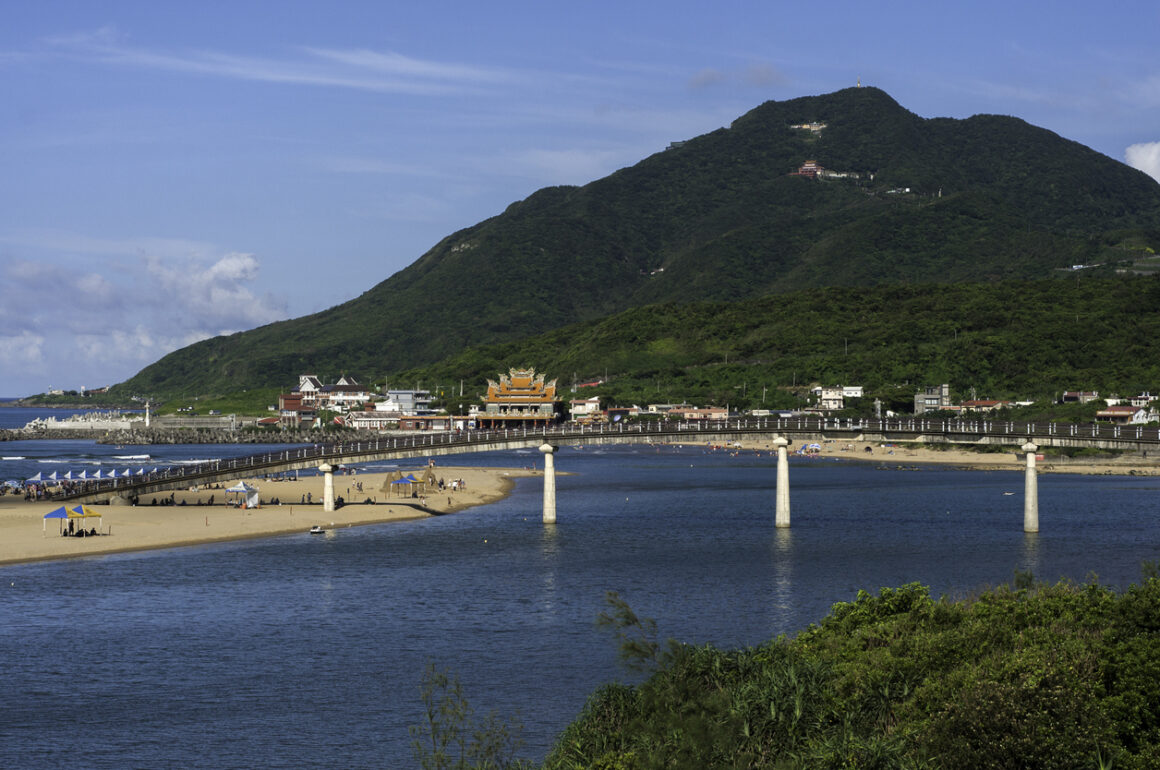
Getting There: The Scenic Route
From Taipei, Fulong sits about 1.5-2 hours away, depending on traffic. While trains run directly to Fulong station and avoid holiday congestion, driving opens up the surrounding coast. Highway 2—the North Coast Scenic Highway—hugs the shoreline for much of the journey, offering continuous ocean views on one side and green mountains on the other. The road itself becomes part of the experience, with the freedom to stop wherever the view catches your eye.
For those approaching from Yilan through the Hsuehshan Tunnel, the northern route along Highway 2 passes through quieter fishing villages where life moves at a different pace. Either direction rewards drivers with some of Taiwan’s most spectacular coastal scenery.
Stone Villages and Historic Trails
Dali: A Village Frozen in Time
About 15 minutes south of Fulong by car, Dali village feels like a place the modern world forgot. Stone houses line narrow streets, their walls built from local rock in an era before modern construction materials reached this isolated corner of the coast. The village sits against a backdrop of mountains that once completely cut off residents from the outside world—supplies meant crossing steep ridges on foot.

Today, that isolation has preserved Dali’s character. Walk the quiet lanes and you’ll find traditional architecture, small temples, and a pace of life that contrasts sharply with Taipei’s energy. A few young locals have returned to restore old buildings, opening small cafés and shops like Dali 63, where you can rest with local snacks before or after hiking.
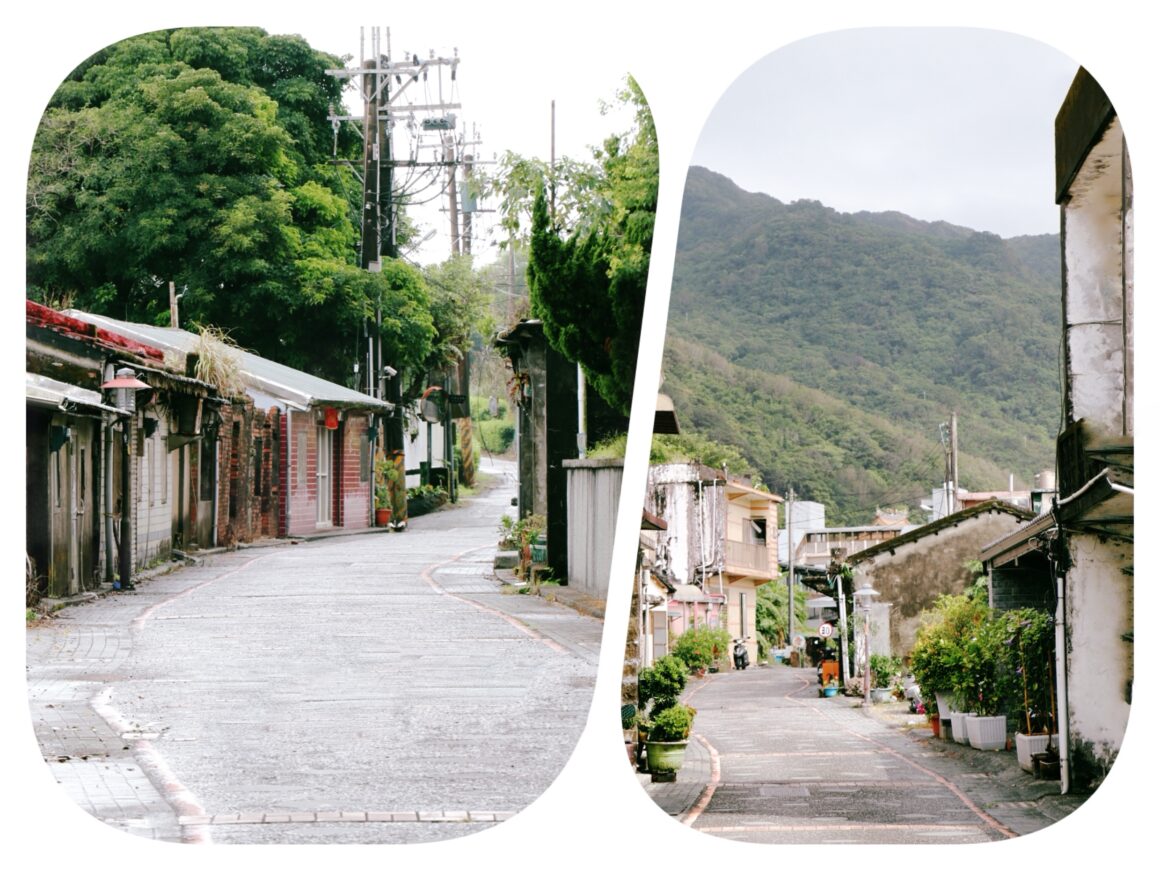
The main draw here is the Caoling Historic Trail, which connects Dali to Fulong via a mountain crossing. The trail takes 3-4 hours and offers constantly changing views—dense forest giving way to open ridgelines with ocean vistas, then descending back toward the coast. It’s moderately challenging but well-maintained, and hiking in either direction means you end near a train station for easy return transport.
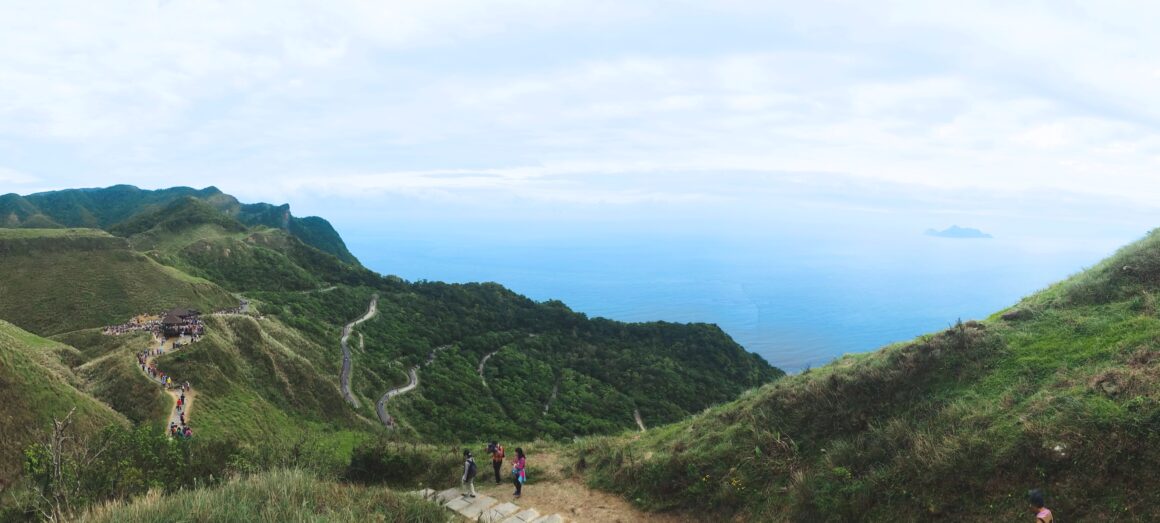
Best for: Photography, hiking, experiencing traditional village atmosphere
Time needed: 1-2 hours for village exploration; 3-4 hours for the full trail
Note: The trail can be muddy after rain; good shoes essential
Coastal Dining Worth the Drive
AMIMOTO: Ocean-View Seafood
Positioned right along the coast with panoramic water views, Wangyuan operates its own fishing boats and Set Net fishing grounds, which means the seafood arrives remarkably fresh—often caught the same day you’re eating it. The restaurant runs a no-menu operation: you’ll be served whatever came in from the boats that morning.
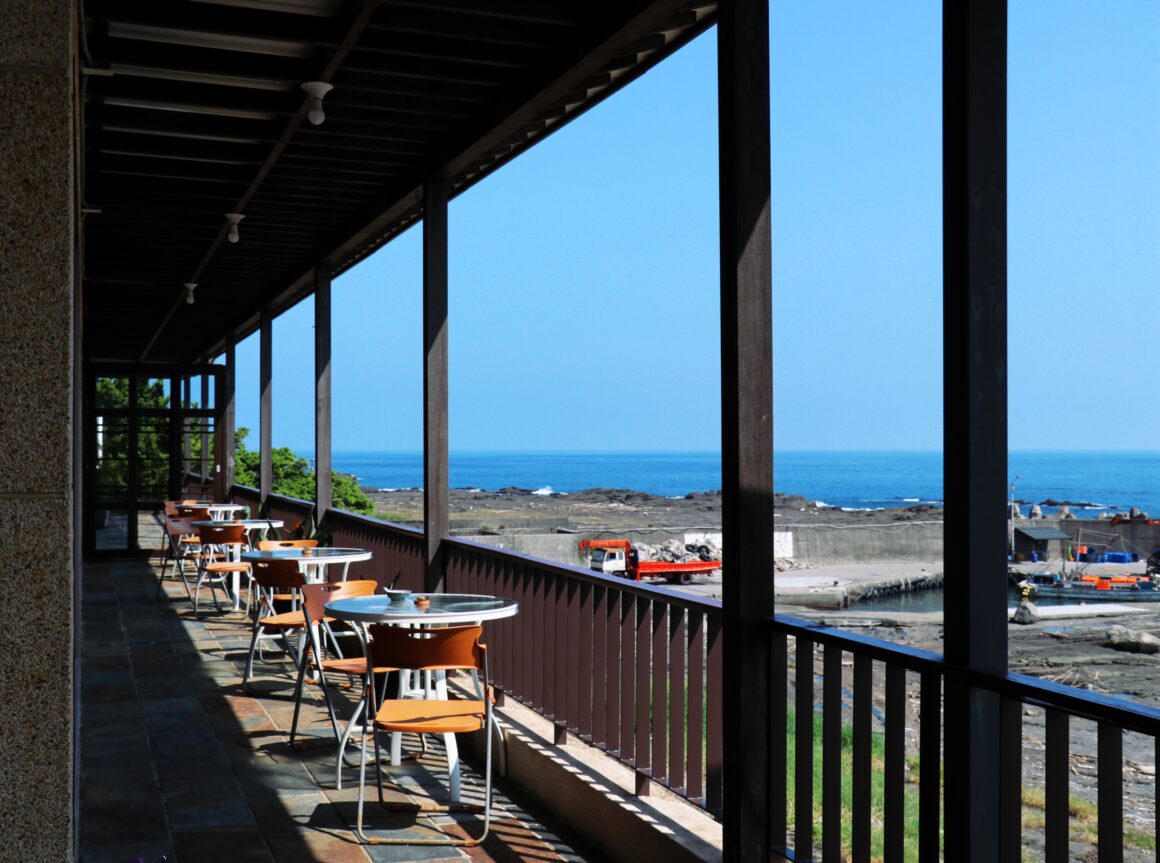
Expect a parade of dishes—sashimi from fish swimming hours earlier, whole steamed catches, fried preparations, braised seafood—all determined by the day’s haul rather than your order. It’s the kind of meal that reminds you why coastal Taiwan excels at seafood: there’s simply no distance between ocean and table. The setting amplifies the experience, with windows overlooking the same waters your meal came from.
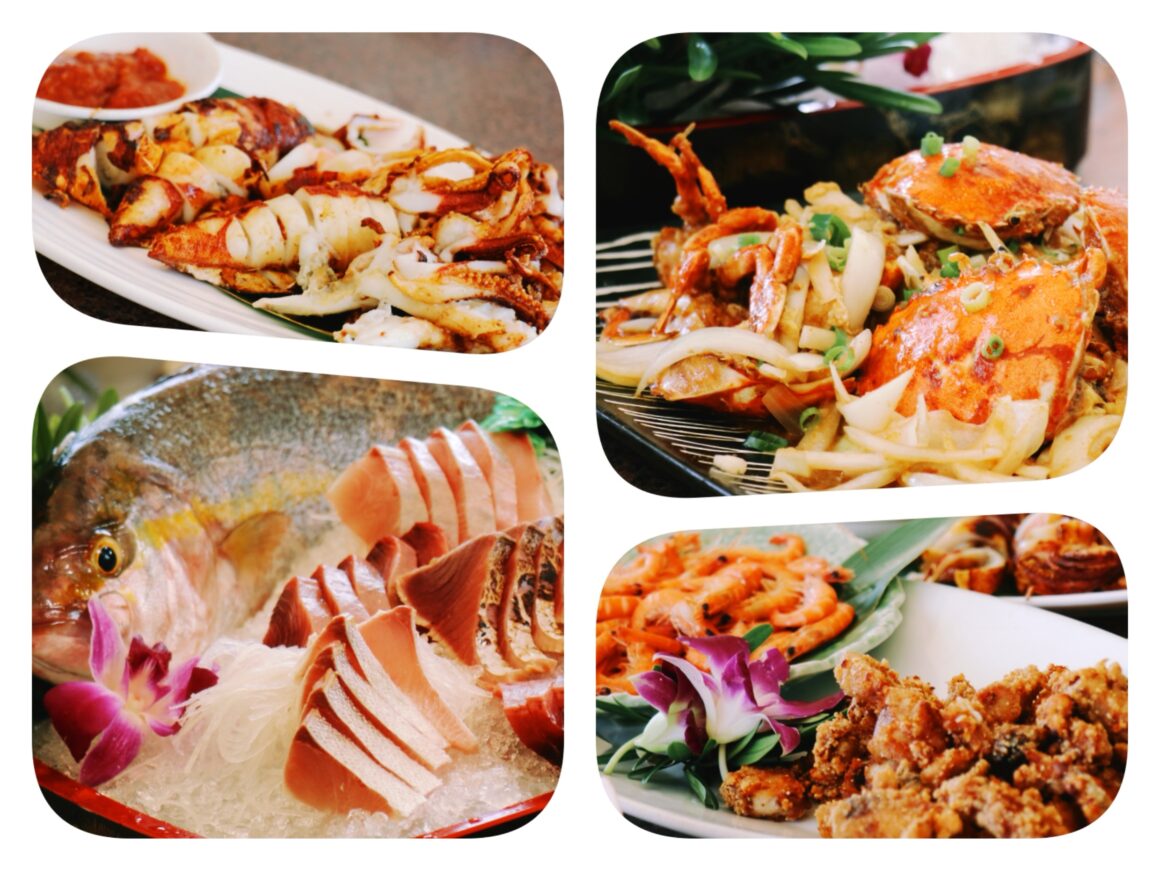
The restaurant accommodates parties from couples to larger groups (2-6 people), with portions adjusted accordingly. Prices reflect the quality and freshness—mid to upper-mid range by Taiwan standards, though still reasonable by international measures. Calling ahead is essential, both for reservations and to confirm availability of seasonal catches.
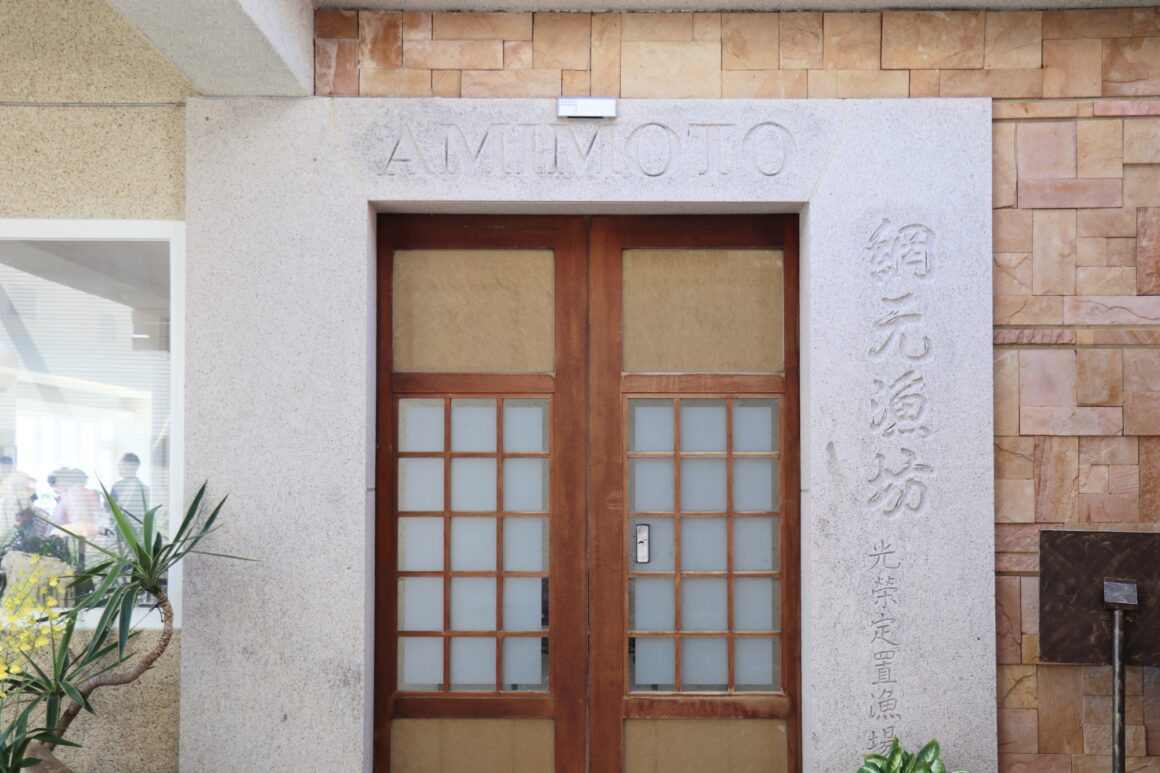
Atmosphere: Casual with stunning ocean views
Best for: Couples and groups, seafood lovers, special meals
Note: Contact in advance to reserve and check seasonal seafood availability
Price range: NT$1,000-2,000/person
Coffee with a View
B1 Cafe, Bitou Harbor
Near the dramatic headland of Bitou Cape sits what might be Taiwan’s most scenically positioned café. B1 Cafe occupies a building practically at the water’s edge, surrounded by rocky coastline and the traditional stone houses of Bitou village. The location alone makes it worth the visit—waves crash nearby, eagles circle overhead hunting fish, and the views extend across the meeting point of two ocean currents.
Owner Grace Yu, a former interior designer from Taipei who lived in New Zealand for several years, discovered Bitou through diving and fell so deeply in love with the area that she made it her home. She filled the café interior with repurposed furniture and vintage finds, creating a space that feels lived-in and welcoming. The café allows pets and maintains a relaxed atmosphere where coffee comes with conversation.

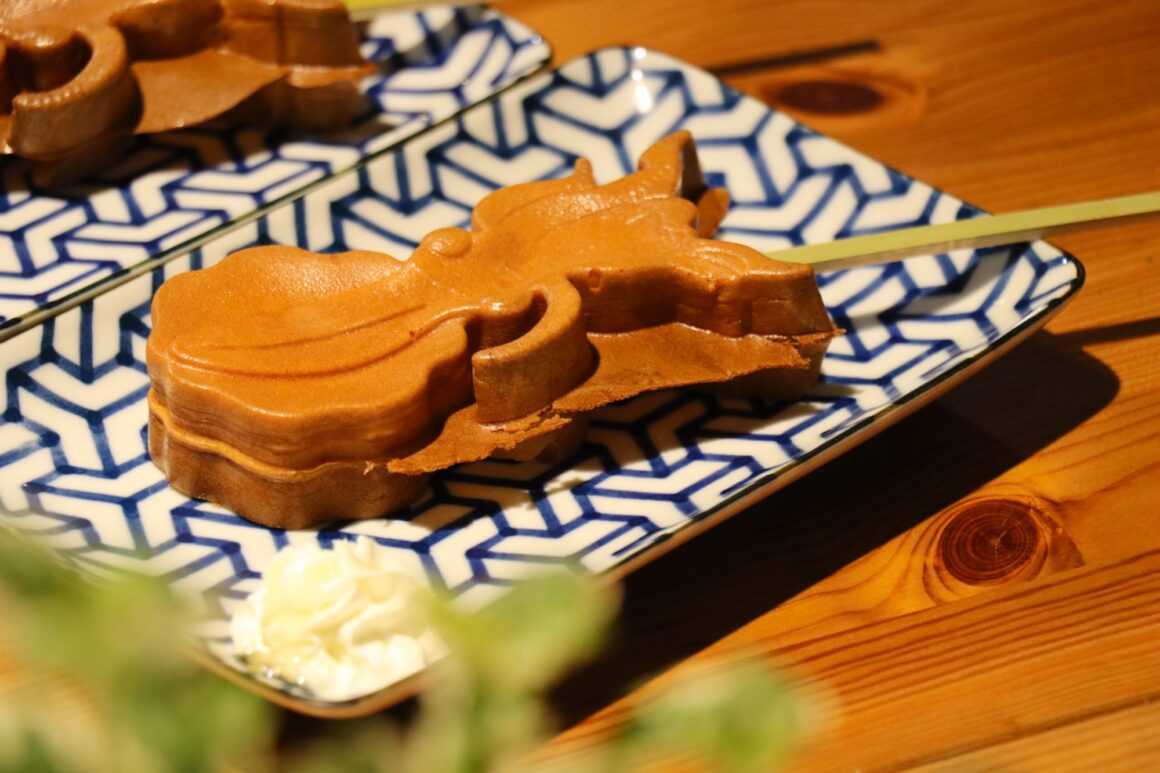
The real appeal here is the combination: excellent coffee, dramatic surroundings, and a sense of being somewhere special. After visiting, walk through Bitou village’s narrow alleys to discover more stone houses and the quiet lanes where locals have lived for generations. The entire village shares a single street name—”Bitou Road”—which tells you something about its intimate scale.
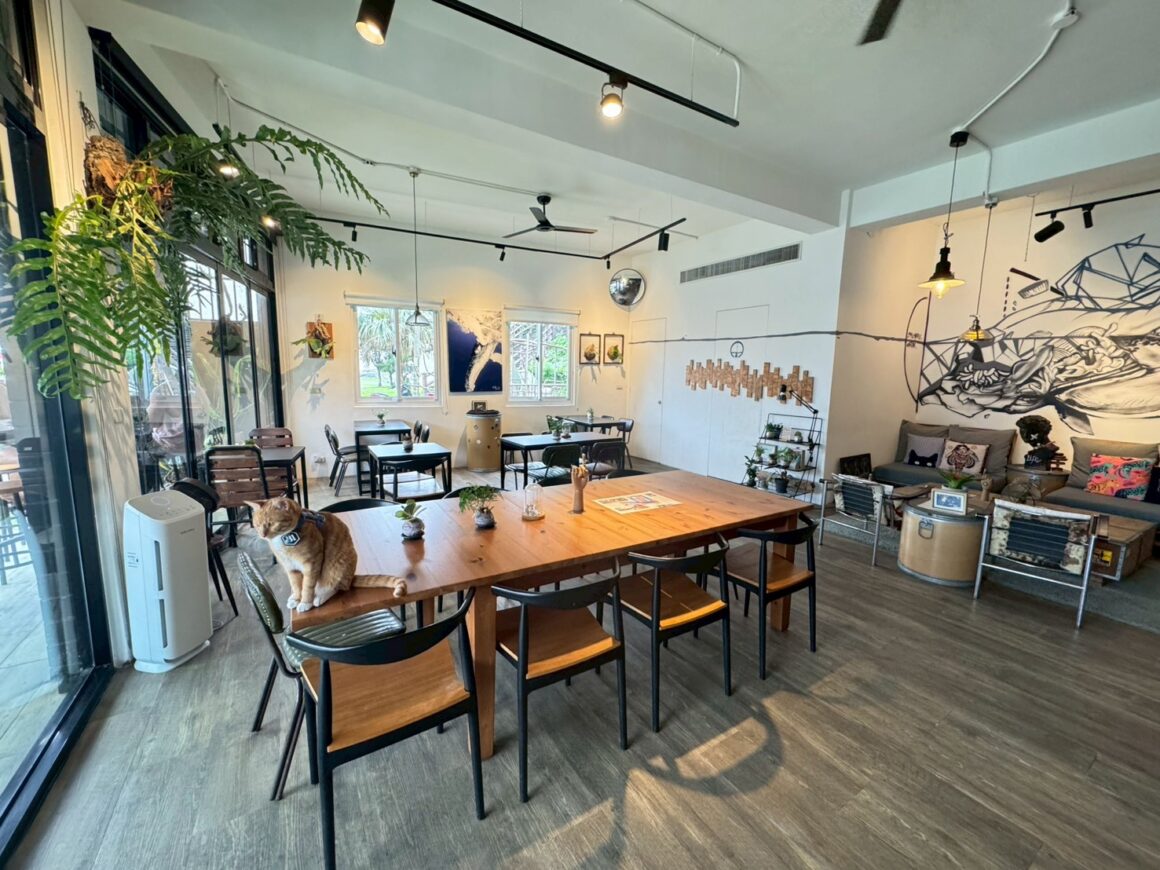
Atmosphere: Relaxed, artistic, ocean-adjacent
Best for: Coffee lovers, photographers, and afternoon breaks
Time needed: 1-2 hours
Bonus: Pet-friendly; owner passionate about marine conservation
Adventures on Water
Bitou Cape Boat Tours
Weather permitting, boat operators at Bitou Harbor run sunset tours along one of Taiwan’s most geologically dramatic coastlines. These aren’t large tourist boats—they’re smaller vessels that can navigate close to the cliffs and rock formations, giving you an intimate perspective on features invisible from land.
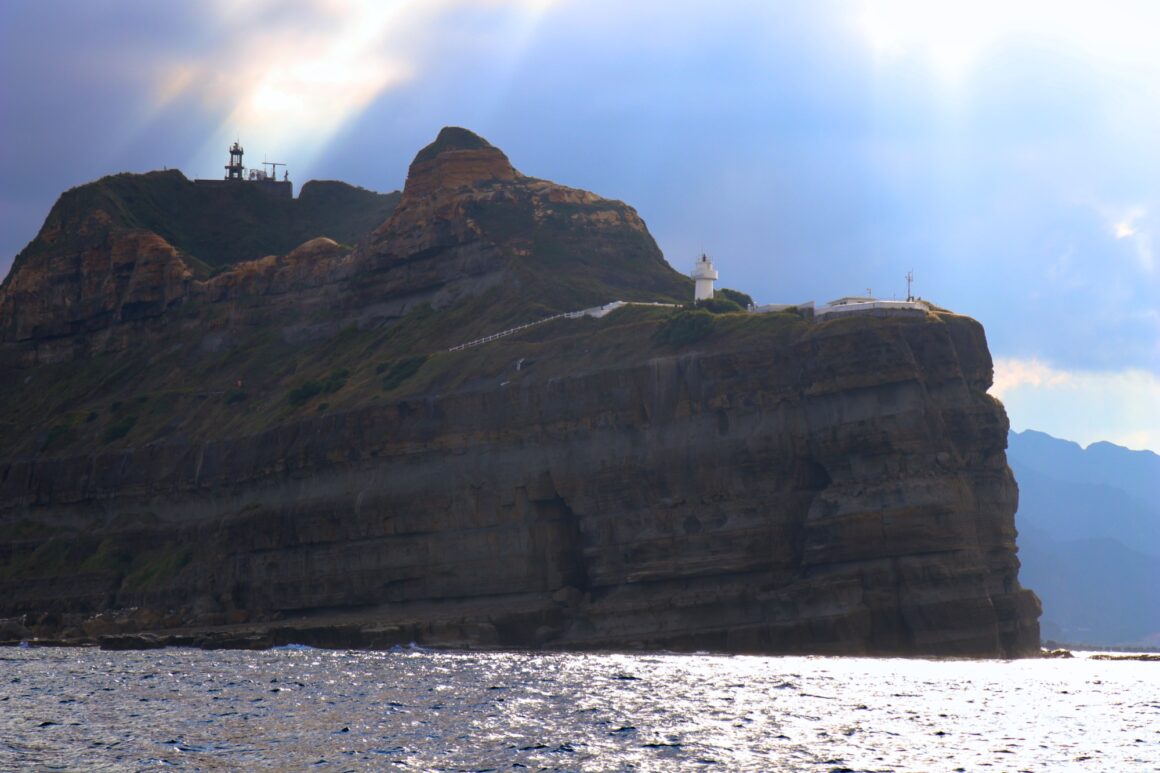
The coast here reveals millions of years of geological drama: towering cliffs, sea caves, unusual rock formations, and layers of different colored stone exposed where the ocean has carved into the headlands. The boat passes through waters where the Pacific Ocean meets the East China Sea, creating currents that support abundant marine life.

Timing tours for sunset adds another dimension—the fading light turns the cliffs golden and the ocean takes on deeper colors. You’ll also see traditional fishermen working from the rocks, standing steady despite the swells, using single-line fishing methods passed down through generations.
Duration: 1-2 hours
Best time: Sunset
Weather dependent: Requires calm seas
Combine with: Bitou Cape Trail, B1 Coffee
Note: Book ahead; bring a light jacket for wind, available each year from May- September. Operators cancel if seas are too rough, so build flexibility into your plans if you want to include this experience.
On Land: Bitou Cape Area
Beyond the boat tours and café, Bitou Cape offers land-based exploration. The cape itself juts into the ocean at the meeting point of two seas, creating conditions that attract diverse marine life—and the eagles that hunt them. Walk the cape’s trails and you’ll frequently see raptors soaring overhead or diving toward the water.
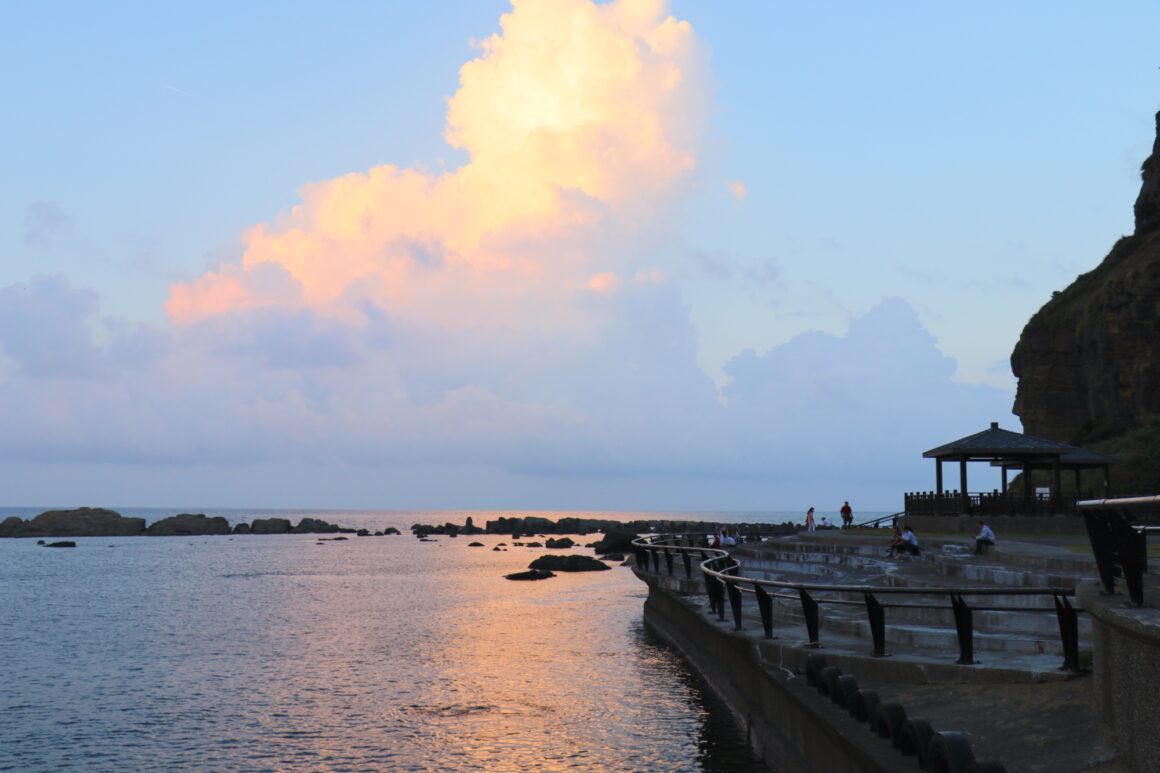
The coastline here features tide pools rich with marine life in spring and summer, when locals harvest gelidium, a type of red algae (石花菜), using traditional methods. This seaweed is prized for making agar jelly desserts and is rich in nutrients, including algae protein, B vitamins, potassium, iodine, and fiber. Watching the harvest is a seasonal scene unique to the northeast coast—worth witnessing if your timing aligns.
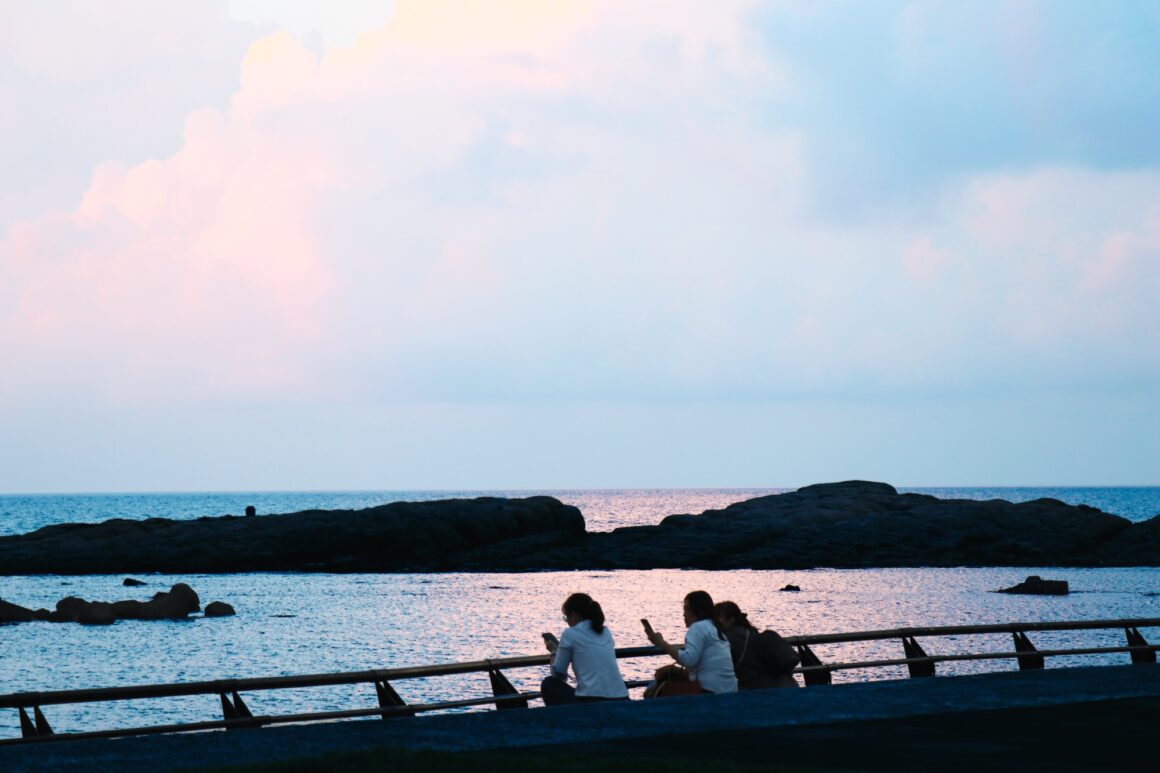
Bitou Cape Park, nicknamed “Squid Park” by locals, is popular for snorkeling when conditions allow. The underwater topography creates natural breeding grounds for squid, making it one of the region’s better diving spots.
Time needed: 1-3 hours depending on activities
Best for: Nature lovers, photography, coastal walks
Note: Tide pools best at low tide; check tide tables
Beach Conservation Volunteer Days
Here’s something you won’t find in typical tourist itineraries: joining a beach cleanup organized by Race for the Beach, a local volunteer group that’s been clearing marine debris from northeast coast beaches for four years. Started by local resident Chiang Yun-chien, these events have grown from a handful of participants to hundreds.
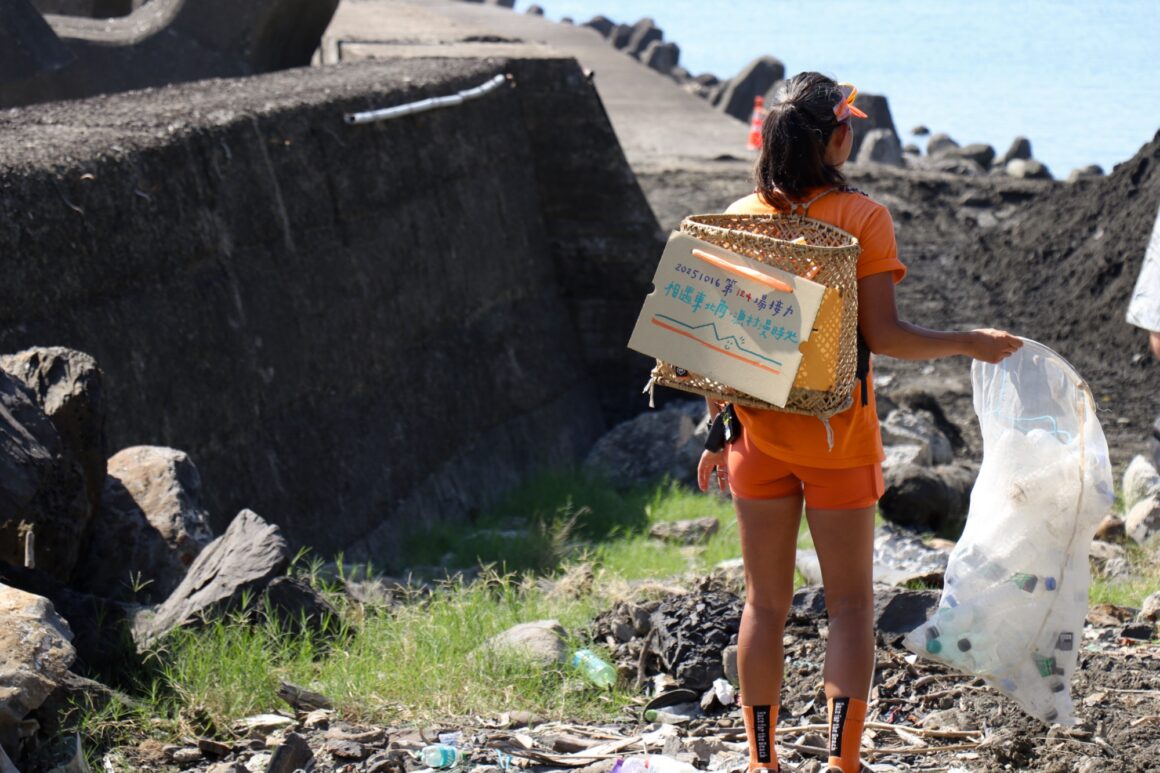
The experience offers an unusual way to see the coast—cleanups often access lesser-known beaches that aren’t on tourist maps, and there’s something satisfying about leaving a place better than you found it. It’s physical work, but the group atmosphere and the chance to interact with locals (and other volunteers) creates unexpected connections. Plus, you’ll never look at plastic waste the same way after pulling it from a beach by the bagful.
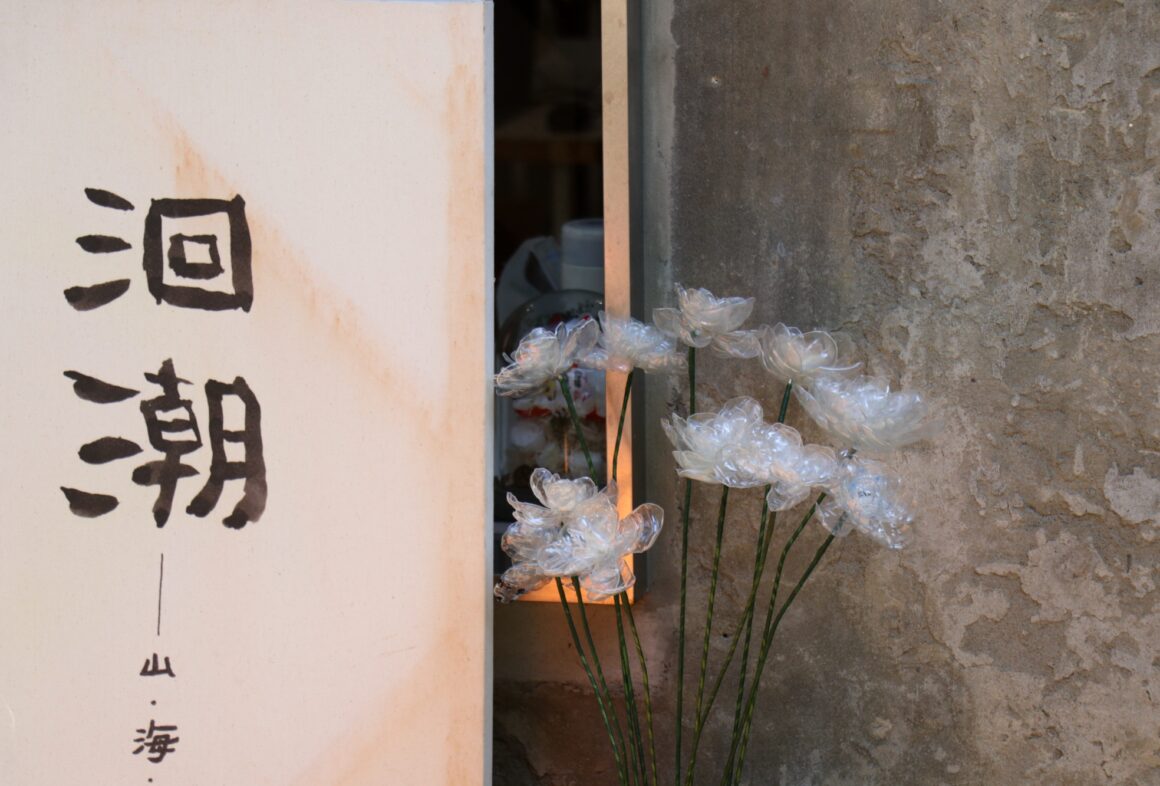
Check their Facebook page “海邊的接力賽” (Race for the Beach) for upcoming dates. Events are free, though donations toward supplies are welcome.
Duration: Half-day
Physical level: Moderate (carrying trash bags, bending, walking on uneven surfaces)
What to bring: Work gloves, sun protection, water bottle, sturdy shoes
Best for: Active travelers interested in environmental issues
Note: Chance to access hidden beaches and meet locals
Planning Your Visit
Transportation:
By car/scooter: Having your own vehicle opens up the most possibilities and flexibility for visiting multiple locations in one trip.
By public transportation: More limited but feasible for key destinations:
- To Fulong:
- Train from Taipei (most convenient, 1.5-2 hours)
- From Ruifang: Keelung Bus Taiwan Tour Bus Golden Fulong Line 856 (Ruifang Station-Maogang) → get off at Fulong Visitor Center
- From Keelung: Keelung Bus 791 (Guojia Xincheng-Fulong) → get off at Fulong Visitor Center
- To Dali:
- Train from Taipei to Dali Station
- From Yilan: Take Green Line 19 bus from Jiaoxi
- To Bitou:
- From Ruifang: Keelung Bus Taiwan Tour Bus Golden Fulong Line 856 (Ruifang Station-Maogang) → get off at Bitou Cape Station
- From Ruifang: Keelung Bus 886 (Ruifang-Hemei Elementary School) → get off at Bitou Cape Station
- From Keelung: Keelung Bus 791 (Guojia Xincheng-Fulong) → get off at Bitou Cape Station
Note: Bus schedules can be infrequent, especially on weekdays. Check schedules in advance and plan extra time for connections. Taxis are available but limited in smaller villages.
Timing: These destinations work as day trips from Taipei, but staying overnight in Fulong allows unhurried exploration without worrying about return traffic. Most activities take 1-4 hours individually.
Best seasons:
- Spring/Fall: Mild weather, fewer crowds, comfortable for hiking and outdoor activities
- Summer: Beach season, warmest water, most crowded
- Winter: Dramatic weather, rougher seas, fewer tourists but windier and wetter
Language: English is limited outside Fulong beach area. Translation apps help significantly. Restaurant staffs may not speak English, but pointing and gestures work for basic communication.
What to bring:
- Rain gear (weather changes quickly on the coast)
- Good walking shoes with grip
- Sun protection
- Reusable water bottle
- Light jacket (ocean wind, air-conditioned spaces)
Practical notes:
1. Seafood restaurants work best for groups who can share multiple dishes.
2. Many small establishments keep irregular hours; calling ahead prevents disappointment.
3. Boat tours and outdoor activities may cancel in bad weather—its’ always better to have backup plans.
4. ATMs are very limited in smaller villages; carry cash!







